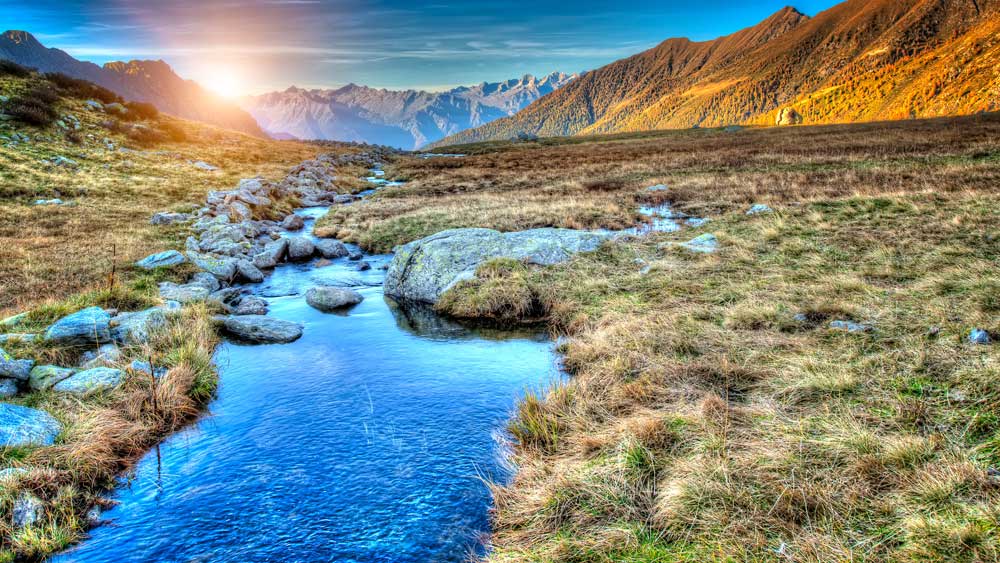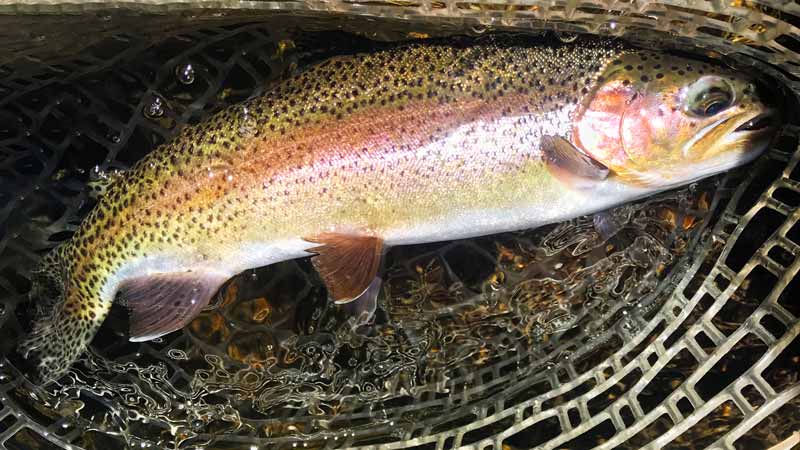When going fly fishing on a stream, you should consider three essential rules that oversee the fish's life: cover, nourishment source (feeding lane), and current. Continuously have these as a primary focus when you are looking at the stream to place your next cast.
For the beginner, there is one fundamental guideline that you can deploy to help you to locate the perfect spot that encompasses all three of these rules: cast to the foam lines or air pockets. This is extremely basic, however compelling. Foam lines, or air pockets, are brought about by an assortment of ways (quick moving water, logs, and bed developments). These items essentially making a channel for sustenance that the fish can rely on and it is marked by the foam/bubbles and is typically situated on deeper water or on a seam off of a structure that gives the fish ample cover. All three of the essential rules, cover, nourishment, and current are all marked by the area where you find bubbles or foam lines.

When you have found these areas of optimal feeding lanes, slowly approach them from downstream as to not spook your target. Before you throw your first cast, you should envision where your fly is going to land and how the fly is going to drift through that zone.
If you are casting a dry fly, you should cast the fly over the foam line and let it a drag free drift through it. If you are casting nymph flies, you should cast past the foam line because your fly will sink. If you cast directly on to the foam line/bubbles, your fly will not have enough time to fall into the feeding zone. So always cast above and let it drift into that target area.

There you have it. The three elements to help you find and catch fish. Almost too obvious and straightforward; however, your knowledge will come when you make your first cast into the prime feeding zone. I'm stunned at what number of individuals neglect, and I believe this is because individuals aren't continually thinking about these factors while on the stream. Frequently, you'll have individuals spellbound on one side or the other about these factors arguing that all that is needed is just need an excellent fly presentation to catch fish. Others say that if you don't have the ideal fly to match the hatch, you'll never get that trout. At times both of these are accurate but can be easily outweighed by the location of where they are fishing versus the perfect cast or fly selection.
You can have the correct fly and an extraordinary cast yet fishing in the wrong water that doesn't hold fish. Also, you cannot be in trout swarmed waters during a caddis hatch tossing a size #2 chartreuse chubby Chernobyl and hope to get any fish, even with a drag free float. Be if you are fishing the correct spot, during a caddis hatch and ready to toss a juicy elk hair caddis out with a reasonably dead drift float, you're significantly more liable to have a decent number of trout on the end of your line for that day. Tailwaters that have numerous food sources and optimal feeding ground are an extraordinary example of a significant area to fly fish. However, because these areas are typically heavily fished, it frequently requires a brilliant presentation and the correct fly to match the current feeding scenario. If picking the correct fly for the job is not your skill set. Don’t worry, Drifthook Fly Fishing has the perfect fly-fishing kit to get you catching more trout every time you go out on the water. Check out their amazing selection here for more details.
Below are four other factors you should look into when you are going out in search of the next best creek to fly fish. Natural, BRSB, Streamflow, and Spring Fed.

NATURAL FACTORS
Environmental factors variables spread to two regions. In the first place, it covers territory for the species, for this situation, trout. You need the correct water temperatures, stream flows, insect life, and stream structure to make it optimal for excellent trout water. We will examine these in further detail in later posts, however, pick 4 or 5 territories you fish regularly and take a gander at them on a guide or online to see if the area that you want to catch is optimal for the species that you are going after. There are numerous components on different stretches of water and finding optimal waterways in your general vicinity will help you discover new and profitable trout waters.

THE RIVER FACTOR
Anglers have assembled an abbreviation to enable us to see how streams are separated. BRSB is the abbreviation, and it represents Basin, River, Section, Beat. A basin is a single and complete seepage starting with one noteworthy stream framework then onto the next. In Colorado, the South Platte River Basin is involved primarily of the South Platte River as the vital waterway yet this base has many different streams (Bear Brook, Rock Rivulet, Clear Spring, and so on) that all channel into the South Platte, making the river. When searching out streams, look at a significant river, and work your way back to the tributaries (or sections) to find optimal fishing grounds (or Beat).

THE STREAMFLOW FACTOR
I need to pause for a minute here and address the subject of stream flows. This can be a significant factor when looking for optimal trout streams. The USGS and nearby state offices all track significant streams at a point along the water length to maintain information for the localities water rights board. For us as fishers, we can utilize this information also and track where stream streams are at. While the numbers and the story they tell is distinctive for each waterway, it's essential to search for three things when inquiring about streams.
To start with, where are the streams at in contrast with highs and lows of previous years? Knowing whether flows are high or low for a season or any given day encourages you to check whether you ought to anticipate anything unique concerning earlier years. If a stream is running high for that season, it might mean that there has recently been a storm and the water could be too washed out for productive fishing. If it is to low, there could be regulations in place that mandate no fishing until further notice. Always check your flow charts before heading out to a new area. This will help you find a new spot that will be productive, and it will help you save time knowing that the conditions are optimal for catching more trout.

THE SPRING CREEK FACTOR
Sustenance is bounteous in spring waterways, and their trout are dynamically explicit in these locations because of the water temperatures and environment. One quickly learns the significance of "matching the hatch," or else there are various fishless days. It is always good to know the lifecycle-period of the fly that the trout are feeding on, so you can duplicate these feedings habits with your fly selection for the day. An example of this will be if there is not hatch you should be using the larva or nymph fly for that particular species in that creek. If you are seeing flies come off the water or fish rising this is when you should switch over to your dry fly or emerger stage of that particular species to target the rising trout. Ty on that juicy BWO and target those sipping monster heads.
For more information on choosing the appropriate fly for any fly fishing adventure, check our selection of fly fishing kits for more details.
About the Author
Matthew Bernhardt, a third-generation Coloradan, grew up at the forefront of the state’s fly-fishing revolution, enjoying time on the water side by side with experienced guides and lifelong anglers.
By combining his passion for fly-fishing with input from other experienced fly-fishers and guides and his fine arts degree from Colorado State University, Matthew spent five years carefully developing the Drifthook Fly Fishing System, built to help every angler catch more trout.
When he’s not spending time with his wonderful family, you’ll find him out on the water catching MONSTER trout, and he anxiously looks forward to the day when his kids are old enough to join him there



